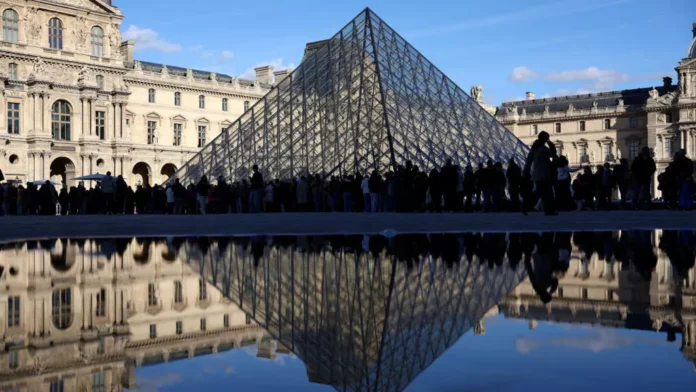
The Louvre Museum has temporarily closed its Campana Gallery after new structural concerns emerged in the floors directly above the exhibition space.
Officials say the shutdown is precautionary while investigations continue into “certain beams supporting the floors of the second floor.”
Museum administrators emphasised that the closure has no direct connection to last month’s jewel heist, yet the timing adds to growing criticism over security and maintenance at the historic Paris landmark.
A four-man gang used a ladder and power tools to steal jewellery worth an estimated €90 million in broad daylight, shocking visitors and raising questions about the Louvre’s preparedness.
Director Laurence des Cars previously warned of deteriorating conditions inside the palace. In a January memo, she flagged water damage, unstable temperatures and ageing infrastructure threatening both visitors and priceless artworks.
The Campana Gallery, located in the Sully wing, holds a vast collection of ancient Greek ceramics. Museum officials confirmed that none of the artifacts will be moved while structural assessments continue.
The second floor above the gallery, currently used as office space, was evacuated after what the Louvre called “recent and unpredictable developments.” Around 65 staff members have been temporarily relocated.
François Chatillon, chief architect for France’s historical monuments, described the Louvre as a “victim of its own success,” noting that areas untouched by the major 1980s renovations are now reaching the end of their lifespan. He warned that further closures may follow as the museum tackles overdue restoration.
The institution is already under pressure following the high-profile October robbery. The museum remained shut for three days as authorities investigated. Four suspects, believed to be small-time criminals, have since been charged.
They left behind DNA traces and even dropped some stolen items, including a crown once owned by Empress Eugénie. The majority of the jewels remain missing.
Despite the challenges, Louvre officials insist the temporary closure is necessary to protect both staff and the invaluable artworks that draw nearly nine million visitors each year.
This article was created using automation technology and was thoroughly edited and fact-checked by one of our editorial staff members